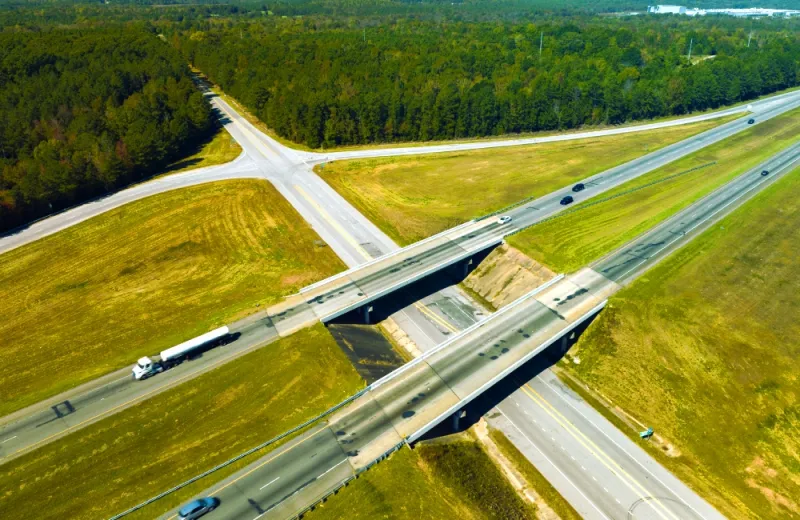With investors chasing a small pool of private infrastructure deals, asset manager Cohen & Steers argues that many are missing out on opportunities in similar listed companies. Infrastructure, including railroads, telecommunications, and power utilities, has become many investors’ top choice in an environment of persistent inflation and high interest rates.
In a paper expected to be published Monday, Cohen & Steers found that listed infrastructure can provide benefits on par — if not better — than their private equivalents. The listed asset class has similar returns, volatility, and equity market correlations as its private counterpart. In addition, while private deals are often concentrated in sectors like utilities, telecommunications, transportation, and energy, listed infrastructure covers a wider range of assets and geographic locations.
“One thing we like about listed infrastructure [is that it] can be highly diversified geographically. And we can invest in different subsectors,” said Tyler Rosenlicht, senior vice president and portfolio manager of global listed infrastructure at Cohen & Steers. “And most importantly, we can make liquid decisions.”
Rosenlicht explained that when conditions in private markets change, investors can’t easily exit positions and incur high transaction costs when they do. In contrast, “in the listed space, you can generally migrate the portfolio fairly quickly.”
But many investors don’t fully understand listed infrastructure, according to the paper. For example, some believe listed infrastructure has lower returns and higher volatility than its private counterpart. These misconceptions are misguided, Rosenlicht said. From 2004 to 2021, the average annual arithmetic return of public and private infrastructure funds was 9.8 percent and 9.4 percent, respectively. During this period, vintage year returns for private funds were better only 56 percent of the time. Listed infrastructure does appear to have higher annualized volatility — 14.2 percent — compared to private infrastructure’s 7.6 percent. But that’s mostly because private assets are appraised less frequently, leading to seemingly smoother pricing. When adjusted for the appraisal effect, private infrastructure’s average annual volatility is 15.3 percent, according to the paper.
Another common misconception is that private infrastructure has a wider investing universe. It turns out that the combined enterprise value of listed infrastructure assets is $6 trillion, twice as much as private infrastructure’s $3 trillion, according to the paper.
The two asset classes also have different geographic focuses. Europe accounts for 57 percent of private funds’ assets, while North America accounts for 30 percent. Sixty percent of assets in listed indices are in North America, with 20 percent in Asia. “Balanced listed and private allocations can help increase geographic diversification,” according to the paper.
The Cohen & Steers paper comes out at a time when dry powder in private infrastructure funds has been growing rapidly among institutional investors. Over $330 billion of undeployed capital was left on the sidelines in the third quarter of last year, according to the manager. And the number is likely to climb higher. The average target allocation to infrastructure of 792 institutional investors is 6.6 percent. The average current allocation was 4.6 percent as of the end of 2021.
If the majority of any new capital goes to private infrastructure funds, “this could cause private investors to chase a limited number of deals, with increased competition possibly driving down returns,” according to the paper. Thus, Cohen & Steers suggests investors treat listed infrastructure as a complement to private assets as the two share many common characteristics.
“What we found after we did our analysis was, a lot of investors are sitting on dry powder trying to get exposure to infrastructure as an asset class, and they are relying on private [vehicles],” Rosenlicht said. “We just want [you] to know that [listed infrastructure] is an option.”







